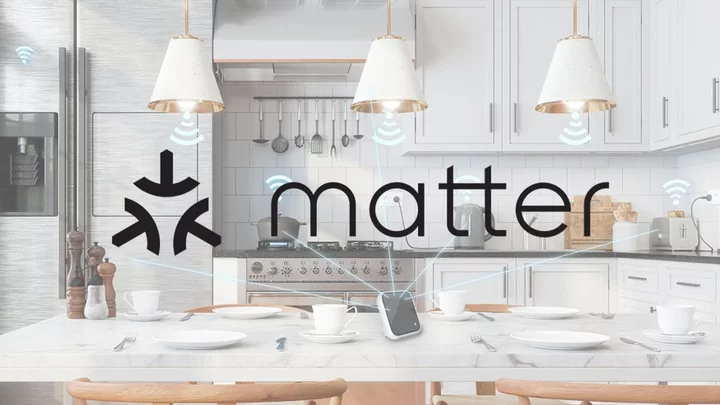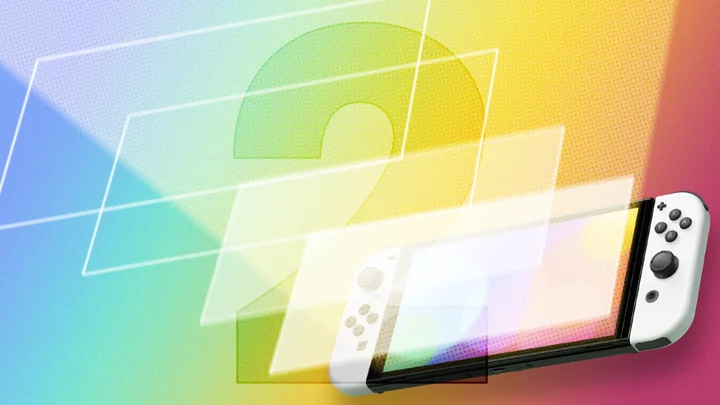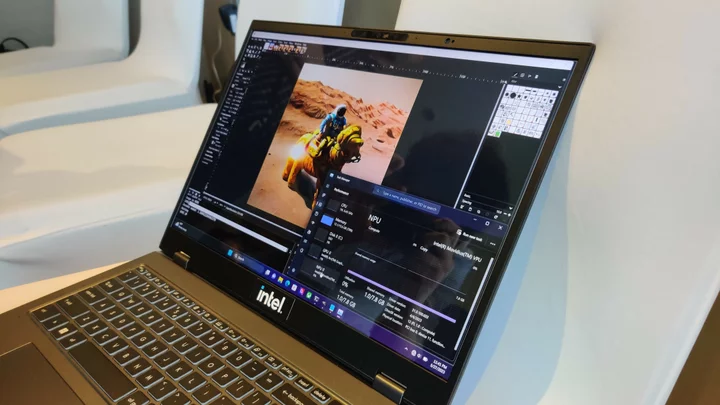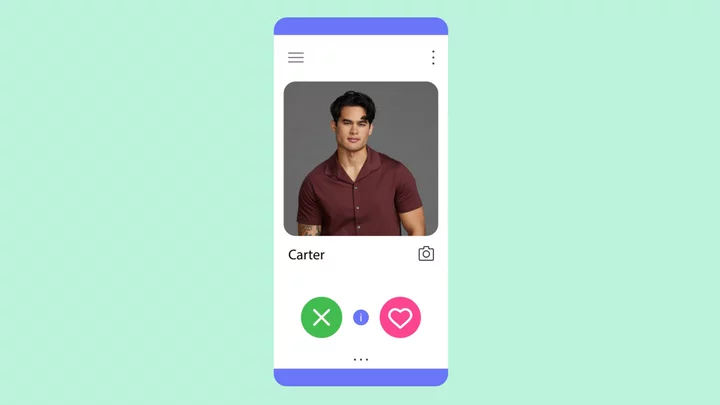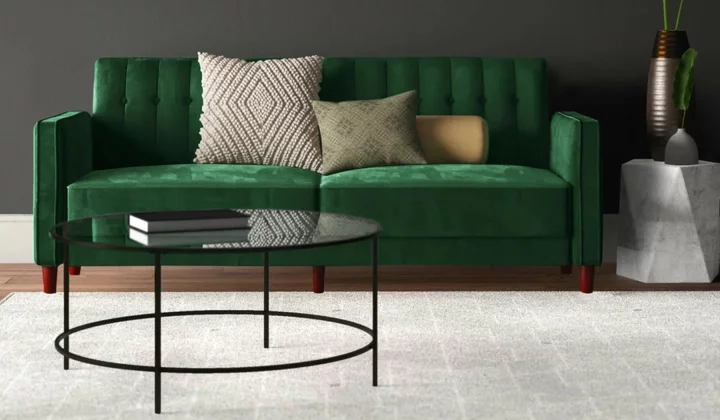As you shop for smart home devices this holiday season and beyond, you might notice the new Matter logo on product boxes across various brands. But what is Matter, and why does it matter? Let's break it down.
Matter Explained
Matter is a global, open-source standard that aims to simplify the smart home ecosystem by allowing internet-connected devices from different manufacturers to simply and securely communicate. This represents an important collaboration between competing companies working towards a common goal: to advance the smart home and make it more consumer-friendly.
Version 1.2 of the Matter smart home standard and certification program officially launched this fall, adding support for nine new device types, including air conditioners, air purifiers, air quality sensors, dishwashers, fans, refrigerators, robot vacuums, smoke and carbon monoxide alarms, and washing machines, bringing the total to 19 compatible device types. The list also includes door locks, gateways, lighting, motion blinds, occupancy sensors, smart plugs, weather devices, platform components, and software applications.
Top-Rated Matter-Compatible Devices
Amazon Echo Show 8 (3rd Gen, 2023) Review
4.5 OutstandingTP-Link Kasa Smart Wi-Fi Plug Slim With Energy Monitoring (KP125M) Review
4.5 OutstandingApple HomePod (2nd Generation, 2023) Review
4.0 ExcellentLeviton Decora Smart Mini Plug-In Dimmer (2nd Gen, D23LP-2RW) Review
4.0 ExcellentTP-Link Tapo Mini Smart Wi-Fi Plug (P125M) Review
4.0 ExcellentGoogle Nest Wifi Pro Review
3.5 GoodLeviton Decora Smart Wi-Fi Outdoor Plug-In Switch (D2150) Review
3.5 Good See all (7 items)Matter is still missing support for a couple of key product categories, most notably security cameras and video doorbells. But since its initial launch a year ago, some 1,214 hardware and software products have received certification (or are in the process of being verified) according to the Connectivity Standard Alliance (CSA), the nonprofit that oversees the standard. That number encompasses products from more than 300 companies and marks a big leap from the roughly 190 completed certifications around this time last year.
"The adoption of Matter in the market has been rapid, on a scale unseen among previous industry standards," the CSA says. “There are Matter products from popular and innovative brands across all initially supported device categories, with products and apps in users’ homes, on their smartphones and tablets, and on store shelves.”
Smart home devices are supposed to make your life easier and more convenient, but installing a bunch of disparate internet-connected devices that don't work together might complicate it instead. That's where Matter comes in.
Based on the internet protocol (IP), Matter is designed to help manufacturers more easily build devices that are compatible with Amazon Alexa, Apple Siri, Google Assistant, and other smart home and voice platforms, the CSA says. The idea is to break down walled gardens in the smart home and foster interoperability among devices, regardless of brand, so you can seamlessly set up and control them via your platform of choice.
"Matter changes the game—by making devices easier to set up, in the same way, every time, and work with other smart products in the home," the CSA explains. Matter-certified gadgets "can be controlled by whichever app, voice assistant, or device is the most convenient."
Who Is Behind Matter?
Matter was born from a working group called Project Connected Home Over IP (Project Chip), which Amazon, Apple, Google, and other major players in the smart home space launched in collaboration with the Zigbee Alliance at the end of 2019.
(Credit: Matter)In a 2019 blog post announcing the project, Google said the goal of Project Chip was to "build a new standard that enables IP-based communication across smart home devices, mobile apps, and cloud services."
In May 2021, the Zigbee Alliance changed its name to the Connectivity Standards Alliance and rebranded Project Chip to Matter.
By January 2022, more than 200 companies were involved in the development of Matter. At the time, the CSA said "thousands" of engineers at participating companies were creating the specification and certification.
What Is the Status of Matter?
The CSA aims to release two Matter updates per year, and they are on track so far. Update 1.1, released in May 2023, focused on incremental improvements and bug fixes, but version 1.2 greatly expanded the breadth of compatible product categories, though the depth of support within those categories is a work in progress.
With robot vacuums, for instance, you can now use your digital assistant of choice (Alexa, Google Assistant, or Siri), to start cleaning or switch modes if your vacuum supports multiple settings like turbo suction, dry vacuuming, or wet mopping. Your assistant’s app can even show status updates on battery charging or cleaning progress.
That said, you can’t yet use your assistant to control more advanced robot vacuum functions like establishing virtual boundaries or deep cleaning zones. Matter takes care of the basics, but you still need your robot’s companion app to access the more advanced functionality of your machine.
This breadth-over-depth approach is somewhat by design, a Matter representative tells PCMag. The Alliance wants to build carefully and slowly without stifling innovation. Moreover, since member companies design the Matter protocols, they likely aren’t motivated to make their own apps obsolete.
Matter devices talk to each other using existing technologies, including Bluetooth Low decora d2Energy, Ethernet, Wi-Fi, and the Thread networking protocol. Most use numeric/QR codes for setup, and with simple devices like switches, fans, and smart plugs, one setup in your chosen virtual assistant’s app may be all you need. That said, Matter does not currently help with functions such as grouping and scheduling gadgets.
We here at PCMag have already tested and reviewed quite a few Matter-compatible gadgets. In the early days of the standard's initial rollout, we faced some snags using the second-generation Apple HomePod as a hub to set up a Matter accessory, but after some troubleshooting successfully paired the device. More recently, the Apple Home app offered a seamless Matter setup experience for the Leviton Decora D2150 outdoor smart plug.
Be sure to check out our reviews of other Matter-compatible devices such as the TP-Link Kasa KP125M, the Leviton Decora Smart Mini Plug-In Dimmer, and the TP-Link Tapo P125M smart plugs to get a sense of how the standard affects individual gadgets. In all of our smart home reviews, we note when a product offers Matter support and detail its setup experience and performance.
Companies involved in the Matter initiative say it's taken a tremendous amount of effort to get to this point. The first Matter-certified hardware products were originally expected to launch in 2021, but that target was pushed back twice. Explaining the delay last March, the CSA said it needed more time to "further improve code quality and stability."
Now that it's officially available, the standard promises to help developers more easily bring smart home products to market. Through Matter, smaller developers can, in theory, focus on developing interesting hardware without needing to build compatibility separately for the Amazon, Apple, and Google ecosystems.
"Matter lets developers build literally, once, and for all," the CSA says. "It’s a common language for today’s smart devices that lets them talk to each other, enabling simple, yet powerful experiences for consumers."
How Amazon, Google, and Apple Are Supporting Matter
Amazon says it supports Matter on "well over 100 million devices" across 20 Echo products. This means you can set up and control Matter accessories from Echo smart speakers and displays. The fourth-gen Echo and the third-gen Echo Show 8 also act as Thread border routers, allowing them to bridge signals from low-energy devices and sensors from your home to your Wi-Fi network and the cloud.
You can now set up Matter devices via the Alexa app on Android or iOS and Amazon products can talk to Matter devices over Thread, Zigbee, Bluetooth Low Energy, and Wi-Fi.
"This is an effort unprecedented in scale and complexity and we are excited about making our homes smarter and easier to use," Amazon's director of smart home and health Marja Koopmans wrote in a blog post.
Setting up a smart light bulb can feel like it requires an engineering degree. - Anish Kattukaran, Google Home and Nest product management directorGoogle last year debuted a revamped Home app on Android and iOS with Fast Pair for Matter, which simplified the process of setting up compatible accessories.
"Setting up a smart light bulb can feel like it requires an engineering degree," Google Home and Nest product management director Anish Kattukaran wrote in a blog post. "With Fast Pair for Matter, this will literally become plug and play. Your Android phone will automatically detect a Matter device and help you securely set it up quickly."
The Web giant has also updated its existing Nest smart speakers, smart displays, and routers to control Matter devices. That includes Thread-certified Nest devices, such as the Nest Wi-Fi router, the Nest Hub Max, and the second-generation Nest Hub, which can serve as Thread border routers.
Google is now working on the forefront of Matter’s multi-admin feature which aims to streamline cross-platform control. Samsung and Google have collaborated to make Matter-compatible SmartThings devices easy to import into the Google Home app and vice versa.
Apple, meanwhile, brought Matter support to iPhones as part of iOS 16.1 last October. With iOS 17, Apple expanded Matter support, making the tap-to-unlock and PIN code features of HomeKit-equipped smart locks available to Matter-compatible locks.
To view and manage the Matter accessories currently paired with your iPhone or iPad, navigate to Settings > General > Matter Accessories. Here, you can see all your Matter-compatible devices in one place, regardless of which app you initially used to set them up, as well as factory reset your gadgets, and delete pairings. Note: you must have at least one Matter accessory paired with your device to see this menu. In other words, if you already use a bunch of smart home devices, you won't see this menu in the iOS Settings app until they gain Matter support, or you set up a new Matter-compatible gadget.
"If a user sets up smart lights using one app, then sets up a smart lock using another, they’ll be able to see both of those distinct accessories together in the iOS Settings app and have full control of which accessories have joined their home network," Apple says. "When the user opens the smart lock app, they can also be presented with the option to add the lights that were previously set up in a different app, enabling users to connect both accessories together to create powerful scenes and automations so, for example, the lights turn on when you unlock the front door in the evening."
In addition to the second-gen HomePod, the more affordable HomePod mini also works as a Matter hub.
Other Matter-Supported Devices
Most major smart home brands are supporting Matter in some capacity at this point. That list includes Amazon, Apple, Aqara (Lumi), Arlo Technologies, Belkin Wemo, Comcast, Eve Systems, Ikea, GE Lighting, Google, Infineon, Leedarson, LG Electronics, Mui Lab, Nanoleaf, Nordic Semiconductor, NXP Semiconductors, Philips Hue, Qorvo, Samsung SmartThings, Schlage (Allegion), Sengled, Texas Instruments, Tuya Smart, Universal Electronics, and Veea.
After update 1.2, that list will grow, though it can take some time once a category is added for brands behind those products to adopt the standard and announce compliance.
(Credit: hakule/Getty Images)Before working with Google on multi-admin support, Samsung played a big part in bringing Matter to life. Last year, the company launched Matter functionality via its SmartThings hubs and Android app. "Through this update, SmartThings users can control their Matter devices from a single application, instead of using multiple apps from different device manufacturers," Samsung said.
The Hue Bridge from Philips Hue, a smart lighting hub, is Matter certified. That means that most every Philips Hue light and accessory now works with Matter if connected to a Hue Bridge. The only exceptions are the Hue Play HDMI Sync box and the dial of the Hue Tap Dial Switch, both of which are not supported by the current version of Matter.
Existing Amazon and Google integrations in the Philips Hue app will continue to work as-is, but Apple HomeKit users need to reset and connect again via Matter, the smart lighting company says.
Philips Hue's parent company Signify said it has "actively participated in demos and periodically tested Matter interoperability of Philips Hue products with smart home partners, ensuring current and future Philips Hue users will have a superior and seamless connected experience."
Do Your Current Smart Home Products Support Matter?
Right now, you can buy plenty of new products with a Matter logo on the box and Matter compatibility baked in, but what if you already have an existing smart home setup? Fortunately, Matter is backward compatible, to an extent.
(Credit: Eoneren/Getty)Matter support will vary by vendor and device, and not all devices will be capable of receiving the update. According to the independent Matter-Smarthome resource, "Among other things, there must be enough flash memory and processing power on the device to perform the update."
Older devices do sometimes receive the update, but support can be inconsistent within a category and even within a brand. For example, Google rolled out Matter compatibility to its Nest Thermostat earlier this year, but those who use other models from the brand will have to keep waiting and hoping.
You'll likely receive an email or some other type of notification from the manufacturer of any products you own if and when a Matter update is available. Especially if you own a product in one of the recently added categories, know that integration takes time, but keep an eye on your inbox.
One Standard to Connect Them All?
Once upon a time, smart home hubs were meant to be one-stop solutions for unifying your connected gadgets and controlling them from a single app. That didn't quite work out as planned, as competing hubs adopted different connectivity protocols.
Hopefully, Matter will get things right where hubs went wrong, though only time will tell. A year after the official launch and two updates deep, Matter covers a lot of devices, brands, and product types. To fulfill its promise, more device types are needed, as are more functions within the existing categories.
Matter has the software in place to support true multi-admin functionality so that anything you can control with Alexa will also immediately work with Google Assistant and Siri. However, due to logistics such as different naming conventions on each platform, importing devices from one to the next is often a pain.
Matter is still very much a work in progress. A truly seamless smart home might still be a pipe dream, but with continued effort, Matter can hopefully come close to living that dream. We’ll update this story as progress warrants, so be sure to check back.

